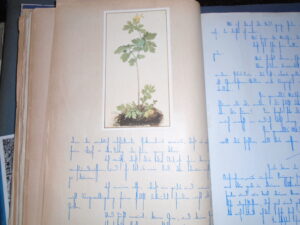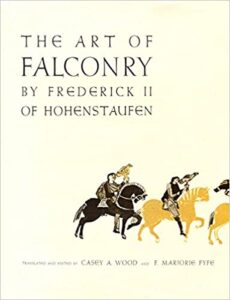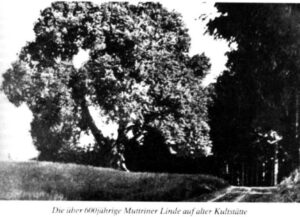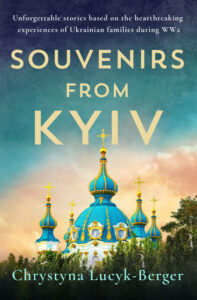Introduction
Do you love maps?
I can stare at maps for hours on end. I like to imagine journeys through vast realms. Tracing routes with my fingers, I travel on river boats, climb mountain passes, trek across endless deserts, or sail along rocky shorelines.
Maps show us how we are all linked by webs stretching all across the globe. The most compelling such system of linkages is the spider web of trade routes.
The amber trade presents an intriguing illustration of this.
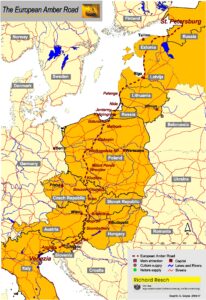
What is amber?
Amber is fossilized tree resin from evergreen conifers dating back to between 35 and 50 million years ago. Found all over the world, amber is associated particularly with the Baltic Sea. Baltic amber accounts for as much as 80% of the world’s amber supplies. Amber was collected along the shore lines of the Baltic coast and also mined in various inland regions.
Amber comes in many different colors and ranges from opaque to translucent. Amber sometimes contains animal and plant material as inclusions. Such pieces provide insight into plant and animal life in past millennia. In some context, amber with inclusions is considered particularly valuable.
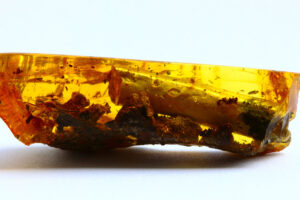
Amber has been much valued as a gemstone from antiquity to the present. In the Baltic regions it was referred to as “Baltic gold.”
Given its enormous age, amber has been associated with legends and myths in many cultures and continues to inspire the imagination.
Amber uses
Amber is not only spectacularly beautiful but also extremely versatile.
Skilled amber craft workers have transformed raw amber into countless religious items, jewelry, and household goods. In medieval times, amber was used to create exquisite jewelry, ornaments, toys, compasses, flasks for gunpowder, dice, small boxes, beakers, chessboards, and pipe stems, to name some of its principal uses. In the crafting of religious artifacts such as crucifixes, figurines, and altars, amber was an important material that combined well with others such as ivory, wood, and silver. For several centuries, amber was fashioned into beads for rosaries at a volume one might well describe as mass production.
In addition, amber was considered to have healing properties. For instance, in the Middle Ages, amber was used to treat joint pain, arthritic ailments, and even teething pain for children. Used in powder form, it was thought to cure throat, ear, and eye diseases as well as working as a remedy for stomach ailments. Amber amulets and beads were worn close to the body to combat jaundice. Lithuanian tribes used the smoke from burnt amber to drive away evil spirits.
Amber was so treasured and such an important source of income in lands along the Baltic Sea that again and again various governing bodies tried to control its extraction, production, and distribution, with increasingly harsh penalties on anyone breaking the rules, in particular from the 14th to the 19th century.
Trade
Prized for its malleable nature, its versatility, and its beauty, amber has been an important trade item for many centuries. Its appeal as a trade good was enhanced by the fact that amber is light-weight and consequently easily transported over long distances. It was essentially a global commodity.
The distances that amber has traveled are astounding. Transported from regions along the Baltic Sea, amber reached Italy, Greece, the Black Sea, Syria, and Egypt. Baltic amber has been found in Mongolian burial grounds and traveled to Asia along the Silk Route. Armenians traveled to Königsberg, today Kaliningrad, where they traded silk rugs for amber; some of this amber made its way to places as far-flung as Bengal.
Experts have previously uncovered evidence of the use of amber in decorative objects in Europe dating back as far as 40,000 BCE, the Paleolithic Age.
Meanwhile, extensive trade routes began to emerge in the Neolithic. Amber from Sicily was being imported into parts of Spain and Portugal over 6,000 years ago.
In the last two centuries of the BCE, the Phoenicians, prolific traders of their time, traveled the sea lanes to the north and helped to spread amber all over Europe and the Middle East.
Amber beads from the Baltic were found in Egyptian pharaoh tombs dating back to 3000 BCE. The archeologist Heinrich Schliemann, who discovered the site of ancient Troy in Turkey, found Baltic amber among the treasures there. It is believed that these were brought to Turkey around 3000 BCE.
Amber was found during an excavation of the ancient city-state Quatna in Syria, founded around 3300 BCE. Amber must have reached Quatna approximately 1345 BC. Tests indicate that the amber came from the Baltic. Quatna boasted workshops that worked with Baltic amber as well as carnelian and lapis-lazuli from Afghanistan, among others. These workshops produced beads, other items used for jewelry, and a vessel in the shape of a lion head.
The breast ornament of the Egyptian pharaoh Tutankhamen (c. 1333–1324 BC) contains large Baltic amber beads.
By the first century BCE, Etruscans, an ancient people of Etruria, Italy, between the Tiber and Arno rivers, and Ligurians, an ancient Mediterranean people, were apparently maintaining a brisk trade in amber. Meanwhile, by the end of third Punic War, 146 BCE, after the Romans had overrun and assimilated the remnants of the Etruscans, the Roman Empire had begun to control much of the amber trade throughout the Mediterranean, along a network of routes referred to as the Amber Road.
The sheer volume of amber is amazing. For instance, Emperor Nero reputedly received as much as 13000 pounds of amber as a gift. Nets used for controlling beasts inside amphitheaters were knotted with pieces of amber. Gladiators liked to adorn their breasts with amulet charms, and one such amulet was found with the words “We will conquer” carved into the amber.
In the 13th century, the Teutonic Order took control of the Baltic amber trade. Amber was used to purchase wax, copper, lead, cloth, and spices. The towns of Königsberg and Danzig (today Kaliningrad, Russia, and Gdansk, Poland) were central hubs of amber trade and production. Eventually, from the 17th century on, control of the Baltic amber trade monopoly was in the hands of the kings of Prussia.
Today, the majority of amber harvested comes from inland mines in the region of Kaliningrad.

Routes along rivers, overland, by sea
Amber was one of the first gems used in long distance trades. This gem has unique characteristics making it a good stone to transport from the Baltic Sea to areas where amber was scarce.
Amber from the Baltic shores was traded for salt from the salt mines of Central Europe or from southern Europe. Other trade goods included tin, fur, wax, wool, wheat, leather, spices, silk, iron, and weapons.
The Amber Road more properly should be described as a collection of trade routes along which amber made its way all over Europe and the Middle East as well as farther afield.
One route leads from St. Petersburg to Venice, via Kaliningrad, Gdansk, Wroclaw, and Vienna.
The Phoenicians favored the sea lanes. The North Sea route started in the Mediterranean, went along the Strait of Gibraltar, and continued north to the channel between England and France to the North Sea.
The ancient Greeks traveled along the Vistula to the Dniester and the Black Sea, continuing on the sea to Athens and Mycenae, southern Italy, and Egypt.
The Roman amber roads followed rivers. For instance, one route traveled along the Danube to the port town Aquileia on the northern shore of the Adriatic.
Another route followed the Elbe, crossed the Alps, and continued all the way to Rome.
A western route started out at the North Sea, followed the Rhine and the Rhone all the way to the ancient Greek colony Massalia in the south of France, today Marseille.
Another route started out in the Curonian Lagoon, framed by today’s Lithuania and Russia along the Baltic coast and an area rich in amber, and followed the river Neman to tributaries of the Dnieper and along the Dnieper to the sea.
In ancient times and well into the Middle Ages, travel was arduous and fraught with danger—whether from roaming bandits, hostile inhabitants of various regions, or inclement weather. Certainly there were few conveniences of the road along the way, no Motel 6 where one could safely rest for the night. Roman roads helped somewhat; meanwhile, I am always in awe when I read about the distances covered by traders in those days.
Conclusion
Trade is a source of income and wealth creation, at least for some of the parties involved. Meanwhile, tangible trade goods are not the only things that travel along trade routes. Cultural practices and customs, religious beliefs, languages, texts, and knowledge are transmitted. Trade transcends boundaries, a form of Internet of ancient days.
The amber trade is a perfect example of this, and it created links to cultures and peoples from lands along the Baltic shores to places as far away as Italy, Greece, the Black Sea, Syria, and Egypt over a period of thousands of years. In turn, by studying the amber trade, we can learn more about these cultures.
If you are curious, here are a few interesting websites about amber:
https://www.ambermuseum.ru/en/home/about_amber/in_ancient_times_and_middle_ages
https://www.smithsonianmag.com/travel/follow-ancient-amber-road-180970609/
https://ambermuseum.eu/en/ [translation leaves a lot to be desired, great images also of various colors and forms of raw amber]
Images
Amber trade route by DI Richard Resch – http://de.wikipedia.org/wiki/Datei:Bernsteinstrasse.jpg, Copyrighted free use, https://commons.wikimedia.org/w/index.php?curid=12050654
Raw unpolished amber By Msamber – Own work, CC BY-SA 4.0, https://commons.wikimedia.org/w/index.php?curid=56685627
Fossilized amber PrinWest Handelsagentur J. Kossowski, CC BY 3.0 https://creativecommons.org/licenses/by/3.0
Amber inclusion Anders L. Damgaard – www.amber-inclusions.dk – Baltic-amber-beetle
Amber mine By PrinWest Handelsagentur J. Kossowski – Own work, CC BY 3.0, https://commons.wikimedia.org/w/index.php?curid=32325075


